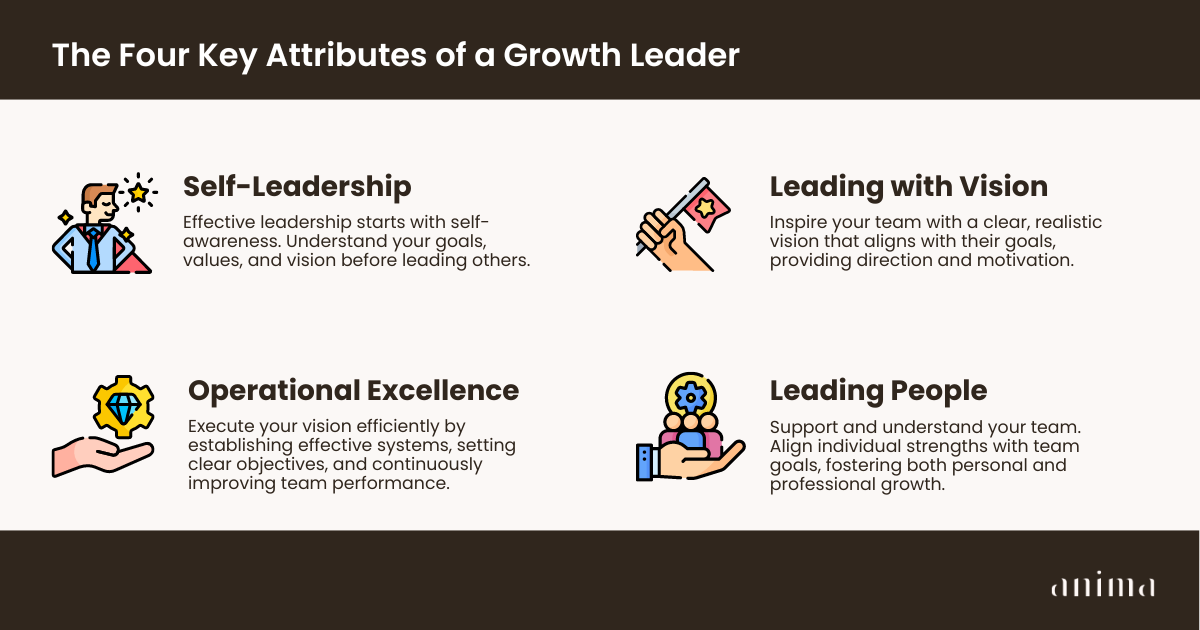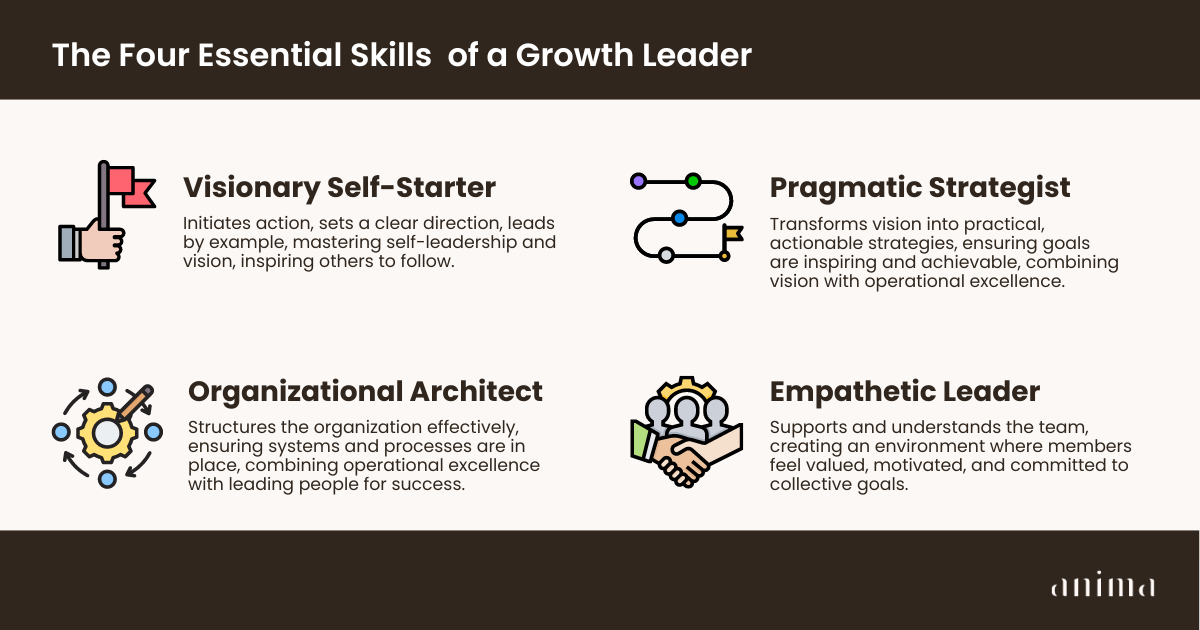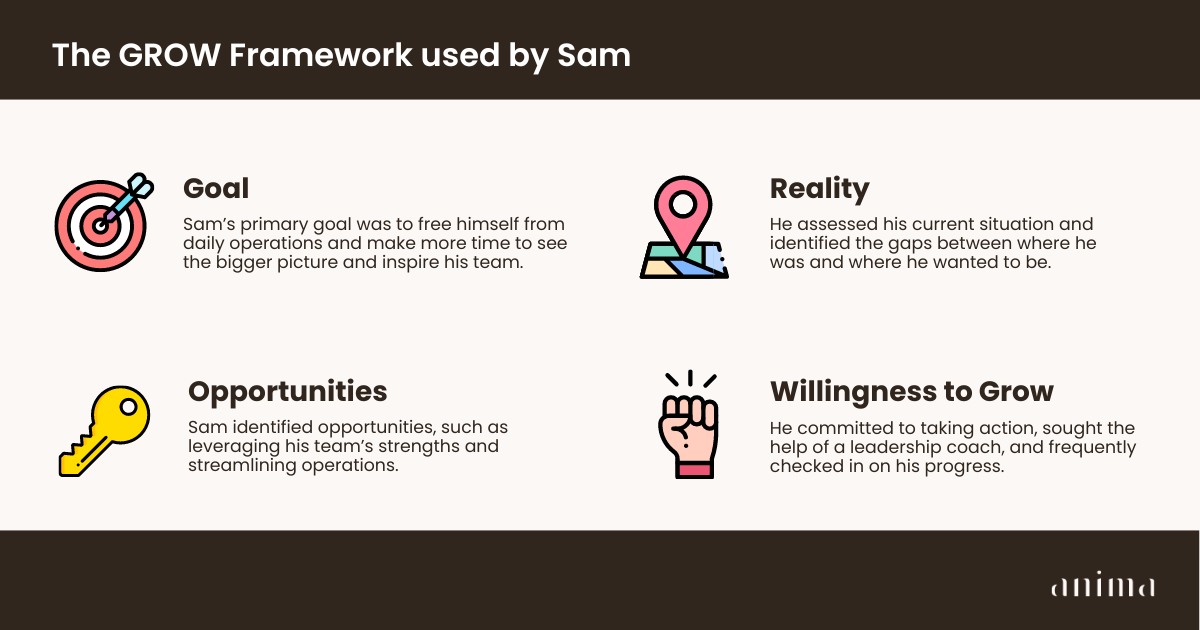To remain competitive and build a high-performing team is essential for business’s today. High-performing teams can achieve great results through collaboration, resilience, and adaptability. But what makes these teams work well? The foundation of a high-performing organization is having a clear vision, effective systems, psychological safety, and a solid understanding of the team’s environment. However, the most important factor in creating such teams is the leader.

This quote clearly highlights the role of a leader in shaping high-performing teams. To build a successful organization, leaders need to develop four specific attributes: Self-Leadership, Leading with Vision, Operational Excellence, and Leading People.
The Four Key Attributes of a Growth Leader
To become a Growth Leader and build a high-performing team, you need to focus on developing four key attributes:
1. Self-Leadership: Effective leadership begins with self-awareness. Before leading others, you must understand your own goals, values, and vision for the future. This involves personal growth and setting a strong example for your team.
2. Leading with Vision: Crafting a compelling vision is essential for inspiring your team. Your vision should be clear, realistic, and aligned with your team’s goals, providing direction and motivation.
3. Operational Excellence: To ensure that your vision is executed efficiently, you need to establish effective systems and processes. This means setting clear objectives, defining roles and responsibilities, and constantly improving your team’s performance.
4. Leading People: Understanding and supporting your team members is crucial. A Growth Leader knows what motivates their team and actively works to align individual strengths with team goals, fostering personal and professional development.

Focusing on these four competencies helps you build the four essential skills every Growth Leader needs. These are:
1. Visionary Self-Starter: This is someone who takes initiative, sets a clear direction, and leads by example. By mastering self-leadership and leading with vision, you develop the ability to inspire others and create a path for them to follow.
2. Pragmatic Strategist: This skill involves turning your vision into practical, actionable strategies. By combining leading with vision and operational excellence, you ensure that your team's goals are not only inspiring but also achievable with the resources at hand.
3. Organizational Architect: This is someone who structures the organization effectively, ensuring that systems and processes are in place to achieve goals. Operational excellence and leading people play a crucial role in developing this skill, as they help you build a solid foundation for your team’s success.
4. Empathetic Leader: Understanding and supporting your team is key to being an empathetic leader. By focusing on leading people and self-leadership, you create an environment where team members feel valued, motivated, and committed to the collective goals.

Sam’s Story: A Real-World Example of Growth Leadership
Let’s bring this concept to life with a real-world example. Meet Sam, the CEO of a small but growing company. When Sam started his company five years ago, he was full of excitement and had a clear vision for its future. His team was eager to follow him on this journey. But as the company grew, so did the complexities. Sam found himself caught up in daily operations, solving problems, and maintaining quality, leaving little time to focus on his vision.
Sam felt that he was losing sight of his goals and was struggling to guide his team effectively. He knew something had to change. That’s when he came across the concept of Growth Leadership. This was Sam’s "Eureka Moment."
Growth Leadership is about balancing the inspiration and motivation of transformational leadership—by setting a compelling vision and valuing people—with the structure and efficiency of transactional leadership, ensuring that systems and processes are in place to achieve high-quality results.
Sam decided to apply the Growth Leadership Framework to his situation. He started with the GROW Framework to help guide his journey:
1. Goal: Sam’s primary goal was to free himself from daily operations and make more time to see the bigger picture and inspire his team.
2. Reality: He assessed his current situation and identified the gaps between where he was and where he wanted to be.
3. Opportunities: Sam identified opportunities, such as leveraging his team’s strengths and streamlining operations.
4. Willingness to Grow: He committed to taking action, sought the help of a leadership coach, and frequently checked in on his progress.

Through this structured approach, Sam was able to transform his leadership style and, as a result, the performance of his team. He realized that Growth Leadership was not just a concept but a practical and actionable framework that helped him achieve tangible results.
Check out this scrollable tool to learn more about the GROW Framework
Starting Your Growth Leadership Journey with Self-Leadership
The path to becoming a Growth Leader starts with self-leadership. Self-leadership is about knowing yourself, understanding your values, and setting a personal vision for where you want to go. It's about taking control of your growth and leading by example. When you master self-leadership, you set the foundation for all other aspects of leadership.
One effective tool to help you develop self-leadership is the GROW Framework. The GROW Framework is a simple yet powerful coaching tool that helps leaders clarify their goals, assess their current reality, explore opportunities, and commit to action. By using the GROW Framework, you can identify where you want to be as a leader and what steps you need to take to get there.
But the GROW Framework isn’t just for personal development—it’s also a valuable tool for leading your team on their growth journey. By guiding your team members through the GROW Framework, you help them set their own goals, understand their current realities, explore opportunities, and commit to personal and professional growth. This approach empowers your team, aligns their personal goals with the team’s vision, and fosters a culture of continuous improvement and high performance.
Ready to Start Your Growth Leadership Journey?
If you’re ready to take the next step in your leadership journey and want to continue learning how to build and lead high-performing teams, sign up for our newsletter. By joining, you’ll receive regular insights, practical tips, and updates on upcoming workshops that can help you develop your Growth Leadership skills.